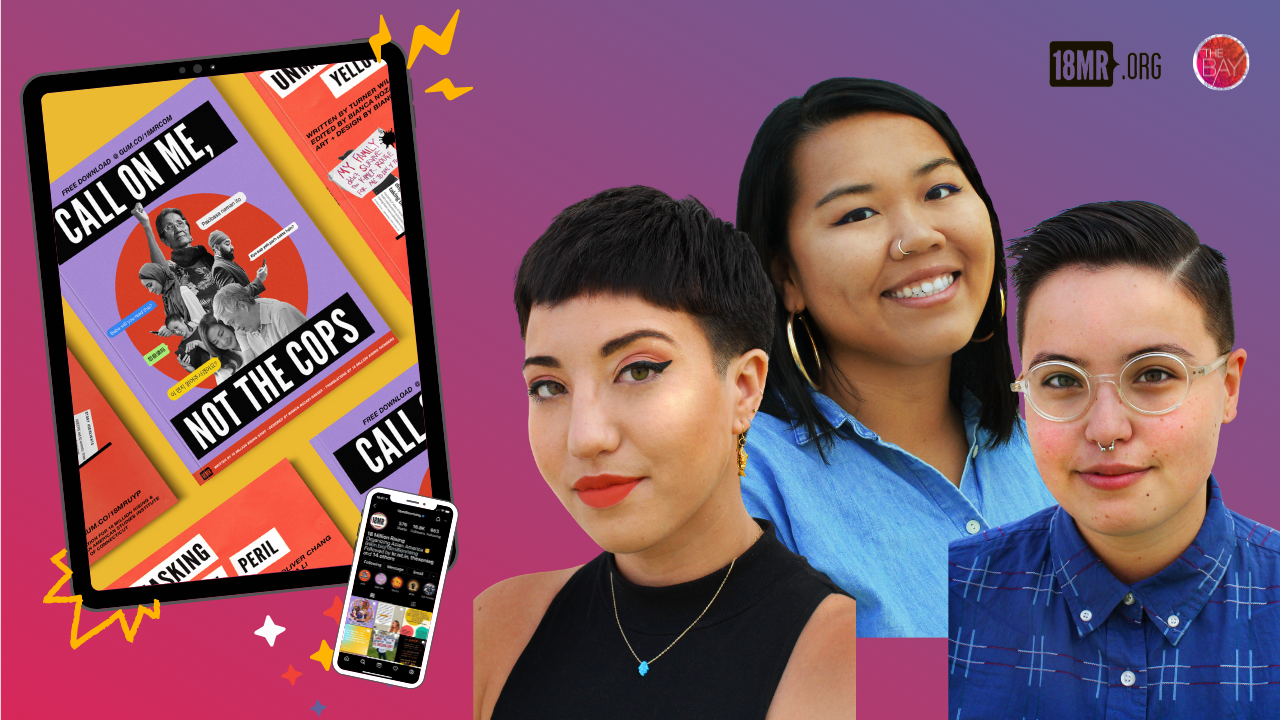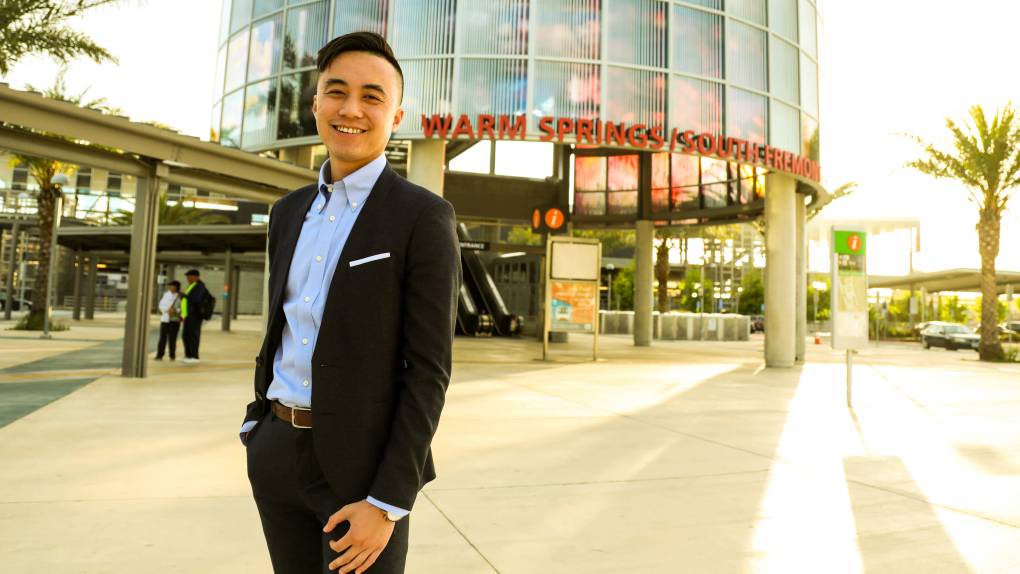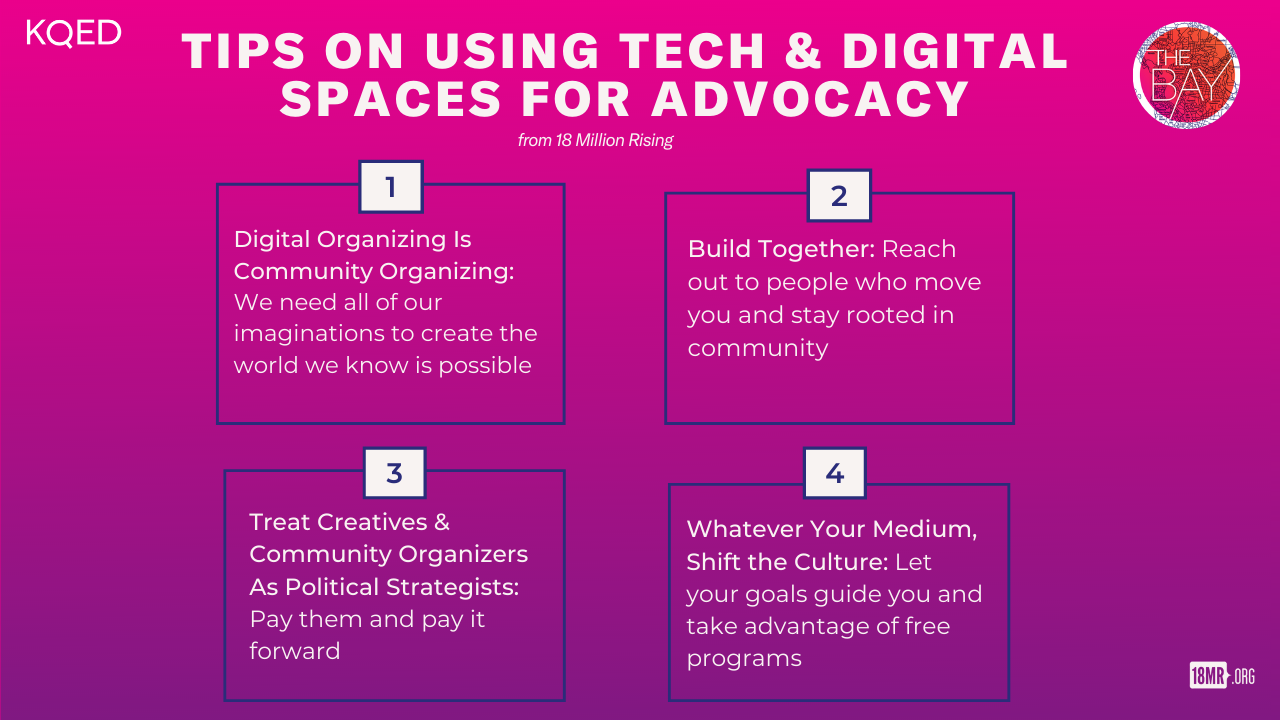The Bay’s How-To newsletter series (sign up here) is an extension of By The People episodes that looks into how democracy functions in the spaces around us – and where, exactly, each of us can plug in. These features include changemakers who have learned how to get involved locally and who are now sharing their step-by-step guide with you.

The summer of 2020 has been given many names, including the “summer of digital protest.” The pandemic forced people to connect with one another through online mediums, and as a result, social movements and protests unfolded in real time. The shift to digital and online interactions also changed how people learned about social justice issues and helped determine the ways they chose to get involved.
For example, Twitter users raised millions of dollars for the Minnesota Freedom Fund and Brooklyn Community Bail Fund for people participating in George Floyd protests. Black creators on TikTok called out the platform for removing, muting or hiding content related to Black Lives Matter. And K-pop TikTok users registered potentially hundreds of thousands of tickets for Trump’s campaign rally in Tulsa, Oklahoma as a prank.
It is clear that the internet has become a way to show up, especially when being outside is not an option. “The internet is a place, and the internet has neighborhoods,” said Bianca Nozaki-Nasser, Director of Design & Product at 18 Million Rising (18MR).
18MR is a digital-first Asian American advocacy organization that has used online spaces as a place for community, campaigning, and making change. The organization was founded in 2012, and the name “18 Million Rising” was inspired by the number of Asian Americans living in the U.S. at the time. Since then, Asian Americans continue to be one of the fastest growing racial groups in the country, but 18MR leaders say, are consistently politically underrepresented.

“It's actually really difficult to organize Asian Americans on a national scale,” said Laura Li, Campaign Manager for 18MR. “We're just scattered all over the place, aside from a few major hubs.”
18MR’s ongoing work in racial justice activism and movement technologies spans across digital content and cultural production. They organize actions, campaigns, technology for social justice, and even zines.
“Unmasking Yellow Peril” and “Call On Me, Not the Cops” are two zines created by the organization in response and in collaboration with their community needs — addressing anti-Asian racism and educating family members about prison abolition.
With just 40 zines, 18MR managed to raise over $350, which was given back to communities in the Bay Area and Connecticut.

A Zine is shorthand for “magazine” but they are much more than a shorter version of the publication. Zines have historically been published as pamphlets, hand-sewn books or even photocopies, while magazines are usually published by a company or group. Usually, zines are often self-published by individuals or small collectives.
Recently, zines have taken on a new digital form with publishing websites like Issuu, Gumroad or smaller publications like Laneha House. Their purpose and creative expression carries on and led to a zine boom in the 1970’s with the rise of punk rock music. Today, zines are created by creatives like the poet Yesika Salgado, cartoonist Breena Nuñez, and youth activists from March For Our Lives.
Three 18MR staff were essential to the zine’s creations: Nozaki-Nasser, Li, and Turner Willman, social media organizer. They each contributed their digital expertise and personal inspirations to craft the zines, collaborations, and it’s ultimate success.
- In an effort to understand more about what exactly it means to be a digital organizer, KQED spoke with the 18MR team.
1. Repeat After Me: Digital Organizing Is Community Organizing
Organizing and advocacy are usually thought of as in-person actions, such as protest, petitions, boycotts or door-knocking, but bringing people together for a shared cause across distances can take many forms. For 18MR, whose membership spans over 120,000 people across the country, their zine project allowed them to reach more people through collaboration and to connect online conversations with historical context.



